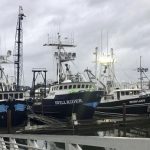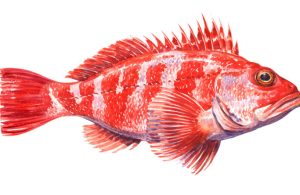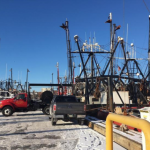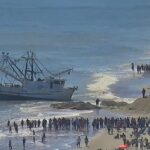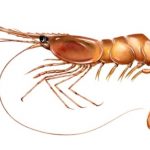Tag Archives: California sea lions

Sea lions throw a party on Cowichan Bay’s federal breakwater to feast on spawning salmon
Steller and California sea lions jostle for space, bark 24-7, and leave stinky feces on the breakwater. About 300 sea lions will climb onto the 182-metre-long concrete dock at one time during at the height of the season, said federal harbour manager Mark Mercer. “They are three layers deep out there.” The majority are males, he said, likening the event to a big bachelor party. Depending on species, males range from about 850 to 2,500 pounds. “Like I tell people: ‘What you see on the breakwater is literally the tip of the iceberg. That’s a tenth of what’s out there.’ >click to read< 12:29

Letter | Save the salmon through lethal means, if necessary
California sea lions, harbor seals and cormorants have never been in danger of going extinct, but 11 distinct populations of salmon and steelhead are. Common sense should tell us we need to control the number of predators through lethal means. A professed sense of helping undernourished countries tells us we should not waste the meat. Canneries for centuries have been processing all kinds of high protein meat. I am quite sure the canneries would be willing to employ additional help at a lot less than is now being spent for all of our ESA efforts. by Carlisle Harrison >click to read< 11:34
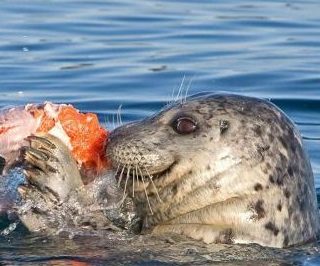
The facts about pinnipeds
Recent studies estimate the harbour seal population to be 80,000 in Lower Mainland waters. Harbour seals eat 10-18 pounds of food each day. At an average of 15 pounds, they consume 1.2 million pounds a day, or 438 million pounds a year. Add to that: thousands of California sea lions who migrate to the area annually to prey on our salmon runs and who weigh two to three times as much as a harbour seal and likely eat 30-60 pounds a day. Add to that: pinnipeds prefer the guts of fish, often leaving the edible carcass. Add to that: their reproductive rate is in excess of 12 per cent annually. These facts then beg the following questions: Bruce Smith, Halfmoon Bay>click to read<13:48

Seals a major factor in fewer salmon
Re: “Ottawa cutting chinook catch to save orcas,”>click to read< May 25. The article concerning the decline of chinook salmon and orca populations fails to mention the influence of seals. According to the University of British Columbia marine mammal research unit, seal numbers in the Strait of Georgia increased from about 5,000 to more than 40,000 from 1970 to 2008, and now kill about half of the juvenile coho and chinook. Reducing the salmon sport catch without addressing the exploding numbers of seals will not help the orcas much. >click to read<17:53
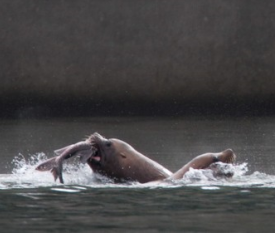
New sea lion wrinkle in the Willamette River threatens sturgeon
Oregon biologists attempting to save the Willamette River’s sharply declined winter steelhead run are facing a new twist in their vexing battle against fish-hungry sea lions at Willamette Falls. The river has seen an unusual influx this winter of large, sturgeon-eating Steller sea lions. Anglers from the falls to the Portland harbor report watching the carnage. “Sturgeon are on our radar,” said Shaun Clements of the Oregon Department of Fish and Wildlife. “We have seen up to 10 Steller sea lions at the falls, which is more than typical.” >click to read<18:24
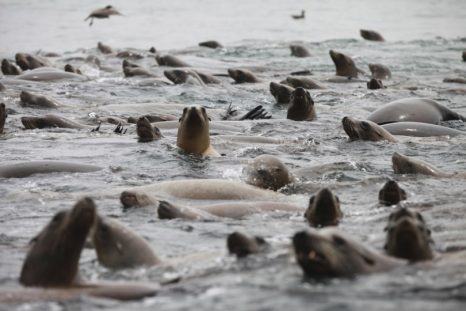
A quarter million?! California sea lion population has tripled, new study finds
The West Coast’s population of California sea lions — the playful marine animals that delight tourists on the Santa Cruz waterfront and San Francisco’s Fisherman’s Wharf while competing with salmon fishermen for valuable catches — has tripled in the past 40 years to more than 250,000.,,, But California sea lions — which range from Mexico to Alaska — have exploded the most in number, jumping from an estimated 88,924 in 1975 to 257,606 in 2014, according to the new NOAA study. But all the sea lions have caused problems. >click here to read<11:33

NOAA/NMFS seeks input on proposed sea lion removal at Willamette Falls
NOAA Fisheries is seeking public input on an application from the Oregon Department of Fish and Wildlife (ODFW) to remove, by lethal means if necessary, California sea lions preying on endangered and threatened salmon and steelhead at Willamette Falls on the Willamette River near Oregon City. The approach would be similar to the ongoing removal of sea lions preying on vulnerable populations of protected fish at Bonneville Dam on the Columbia River. Under the Marine Mammal Protection Act (MMPA), each application NOAA Fisheries receives for removing problematic sea lions must undergo independent consideration. info, click here to read the story 08:36
D.B. Pleschner: Nearshore anchovy abundance not proof fishery is collapsing
 Recently, Dr. William Sydeman of the Farallon Institute, published a study claiming that the abundance of anchovy near shore — especially in places like Monterey — is evidence that the population is collapsing. Sydeman’s logic is based on an old argument that collapsed populations always shrink inshore. But there’s one big problem with that theory — it’s unsupported by scientific evidence.,,, The bottom line: environmental groups with an anti-fishing agenda are already gearing up to hot-box the Pacific Fishery Management Council in spring 2018, lobbying for a steep reduction in anchovy harvest limits, employing whatever colorful, sensational pictures they can paint. click here to read the story 20:58
Recently, Dr. William Sydeman of the Farallon Institute, published a study claiming that the abundance of anchovy near shore — especially in places like Monterey — is evidence that the population is collapsing. Sydeman’s logic is based on an old argument that collapsed populations always shrink inshore. But there’s one big problem with that theory — it’s unsupported by scientific evidence.,,, The bottom line: environmental groups with an anti-fishing agenda are already gearing up to hot-box the Pacific Fishery Management Council in spring 2018, lobbying for a steep reduction in anchovy harvest limits, employing whatever colorful, sensational pictures they can paint. click here to read the story 20:58
State warns of sick, stranded sea lions on Oregon coast
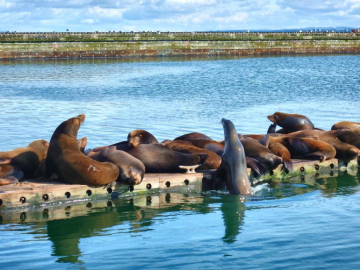 Oregon wildlife and health officials are warning beachgoers to be aware of sick and stranded California sea lions at the coast and to keep their distance. Officials at Oregon State University’s Marine Mammal Institute said they’ve documented a leptospirosis outbreak. The bacteria can prompt sick or dying sea lions to strand themselves on beaches and can also pose a threat to dogs, livestock and wildlife, as well as people. click here to read the story 13:55
Oregon wildlife and health officials are warning beachgoers to be aware of sick and stranded California sea lions at the coast and to keep their distance. Officials at Oregon State University’s Marine Mammal Institute said they’ve documented a leptospirosis outbreak. The bacteria can prompt sick or dying sea lions to strand themselves on beaches and can also pose a threat to dogs, livestock and wildlife, as well as people. click here to read the story 13:55
Sea lions hinder salmon conservation
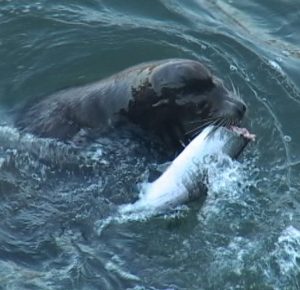 California and Steller sea lions took a bigger bite out of last year’s salmon run than in any previous year, according to a new federal report. 2015 saw a bigger run, with more than 239,000 chinook and steelhead migrating past Bonneville Dam. That year, the total number of salmon that sea lions ate was he largest ever recorded. The Army Corps of Engineers recorded more than 260 sea lions eating more than 10,000 fish from January to June 2015. The 2016 salmon run was far smaller, but the sea lions’ appetite for salmon didn’t shrink much. They still ate more than 9,500 fish, nearly 6 percent of the run. That’s the largest share of the run eaten by the large marine mammals since Army Corps scientists started watching 15 years ago. Read the rest here 12:43
California and Steller sea lions took a bigger bite out of last year’s salmon run than in any previous year, according to a new federal report. 2015 saw a bigger run, with more than 239,000 chinook and steelhead migrating past Bonneville Dam. That year, the total number of salmon that sea lions ate was he largest ever recorded. The Army Corps of Engineers recorded more than 260 sea lions eating more than 10,000 fish from January to June 2015. The 2016 salmon run was far smaller, but the sea lions’ appetite for salmon didn’t shrink much. They still ate more than 9,500 fish, nearly 6 percent of the run. That’s the largest share of the run eaten by the large marine mammals since Army Corps scientists started watching 15 years ago. Read the rest here 12:43
California sea lions suffering from brain damage caused by algal blooms

Rep. Doc Hastings’ bill would protect salmon from California sea lions
 Opponents of the bill argued that the Marine Mammal Protection Act already grants local authorities appropriate action to safeguard the local fish species, saying that there was no demonstrative threat that numbers of the salmon population were falling below what was acceptable by the National Oceanic and Atmospheric Administration. Advocates of the bill, including Hastings, argued that the bill was a proactive measure that would build on previous methods which he said have been proven effective. continued@mcclatchy,com
Opponents of the bill argued that the Marine Mammal Protection Act already grants local authorities appropriate action to safeguard the local fish species, saying that there was no demonstrative threat that numbers of the salmon population were falling below what was acceptable by the National Oceanic and Atmospheric Administration. Advocates of the bill, including Hastings, argued that the bill was a proactive measure that would build on previous methods which he said have been proven effective. continued@mcclatchy,com
Starved for attention, Captain Paul Watson: The Damn Hunger Games on the Columbia River
 Sea Shepherd is proud to announce the launch of the 2013 Dam Guardian campaign to protect California sea lions along the Columbia River in Washington and Oregon. This marks the second year Sea Shepherd has organized a sea lion defense campaign along the Columbia. This season Sea Shepherd has amassed plans to maintain a formidable presence at the Bonneville Dam and the Astoria trap site with a team of more than 30 international volunteers presently scheduled to participate on site. Below is a commentary by Captain Paul Watson originally posted on May 31, 2012. continue
Sea Shepherd is proud to announce the launch of the 2013 Dam Guardian campaign to protect California sea lions along the Columbia River in Washington and Oregon. This marks the second year Sea Shepherd has organized a sea lion defense campaign along the Columbia. This season Sea Shepherd has amassed plans to maintain a formidable presence at the Bonneville Dam and the Astoria trap site with a team of more than 30 international volunteers presently scheduled to participate on site. Below is a commentary by Captain Paul Watson originally posted on May 31, 2012. continue

































